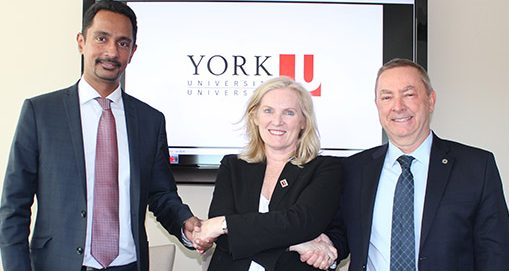Munirul-Haq Raza | News Editor
Featured image: The joint project will be 50 per cent funded by Fermilab for at least the first five years. | Courtesy of YFile
A permanent joint research position between York and Fermilab will start on July 1, 2018, and will be 50 per cent funded by Fermilab for the first five years, and perhaps for 10 years in total. The scientist will be a part of the Deep Underground Neutrino Experiment (DUNE), according to a press release by Sandra McLean of York Media.
“The person we hire will be expected to work 50 per cent of the time on DUNE and/or LBNF (Long Baseline Neutrino Facility), but the home base will be York.
“How much time is spent in Chicago at Fermilab will depend upon circumstances,” says Marshall McCall, department chair for Physics and Astronomy at York.
While the position will focus on the experimental side of physics, McCall also comments: “This will involve instrument development and performance simulations.”
When asked how he felt about the position, McCall says: “Very excited. Not only will DUNE carry out cutting-edge science, but the nature of our engagement will provide us with a direct connection to Fermilab, America’s premier particle physics laboratory (they perform a range of research related to particle physics).
“I perceive a flow of both students and scientists back and forth between York and Fermilab will develop.”
Neutrinos are a set of elementary particles desrcibed by physics, and special versions of neutrinos are leading candidates for dark matter.
McCall describes the significance of DUNE, compared to previous Neutrino experiments: “DUNE is actually two neutrino detectors.
“They will be placed in the most intense beam of neutrinos ever created, namely by the LBNF.
“DUNE will study how neutrinos change from one type to another as they travel through space (so-called neutrino oscillations), and in the process, constrain with high precision their masses, which are not well known.
“DUNE hopes to provide insight into why the universe today is made almost entirely of matter, rather than antimatter.
“Also, it has the ability to measure how stable the proton is—which is pretty important, given that everything we know here on Earth is made of protons.
“Further, DUNE will be able to detect the burst of neutrinos produced when a nearby heavy star collapses and explodes as a supernova, which will test current theories about how such explosions occur,” he continues.
The deadline for applications is December 1, 2017.


